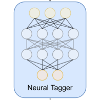Neural factoid geospatial question answering
DOI:
https://doi.org/10.5311/JOSIS.2021.23.159Keywords:
question answering, natural language processing, machine learning, geospatial, semantic graphAbstract
Existing question answering systems struggle to answer factoid questions when geospatial information is involved. This is because most systems cannot accurately detect the geospatial semantic elements from the natural language questions, or capture the semantic relationships between those elements. In this paper, we propose a geospatial semantic encoding schema and a semantic graph representation which captures the semantic relations and dependencies in geospatial questions. We demonstrate that our proposed graph representation approach aids in the translation from natural language to a formal, executable expression in a query language. To decrease the need for people to provide explanatory information as part of their question and make the translation fully automatic, we treat the semantic encoding of the question as a sequential tagging task, and the graph generation of the query as a semantic dependency parsing task. We apply neural network approaches to automatically encode the geospatial questions into spatial semantic graph representations. Compared with current template-based approaches, our method generalises to a broader range of questions, including those with complex syntax and semantics. Our proposed approach achieves better results on GeoData201 than existing methods.

Downloads
Published
Versions
- 2022-01-05 (2)
- 2021-12-24 (1)
Issue
Section
License
Copyright (c) 2021 Haonan Li, Ehsan Hamzei, Ivan Majic, Hua Hua, Jochen Renz, Martin Tomko, Maria Vasardani, Stephan Winter, Timothy Baldwin

This work is licensed under a Creative Commons Attribution 3.0 Unported License.
Articles in JOSIS are licensed under a Creative Commons Attribution 3.0 License.
